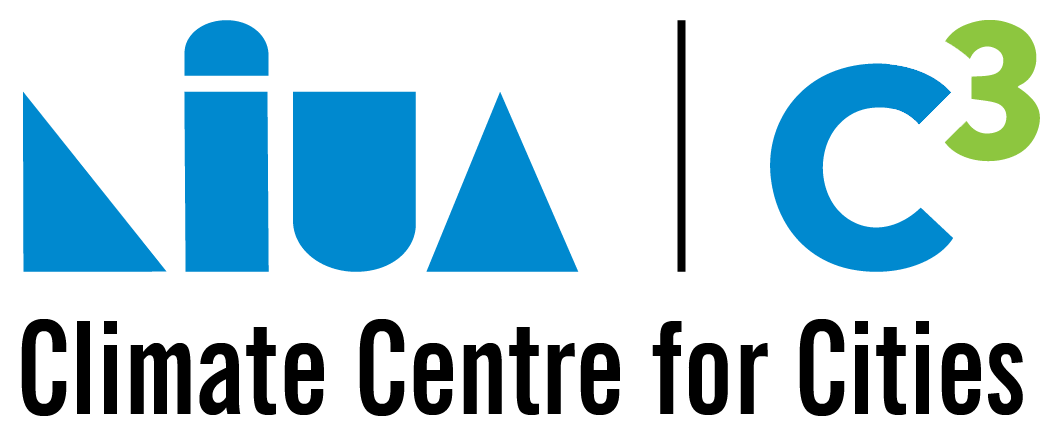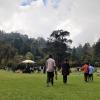Water Utopic ‘Sheher’: Integrating Urban Flood Risk Management with Water Sensitive Urban Design
Published On:
Wednesday, August 18, 2021
In recent years, short duration and high intensity rainfall events such as cloud bursts, have led to widespread flooding in Indian cities. The recent ‘code red’ IPCC report warns that ‘climate change is intensifying the water cycle, bringing more intense rainfall and associated flooding, as well as more intense drought in many regions.’ These events have high economic and social costs, disrupt the lives of urban dwellers, extensively damage property and cause economic, life and livelihood losses.
Urban flood management in India focuses on annual improvements of its ‘grey infrastructure’ (gutters, drains, pumps etc.) that are designed to quickly move stormwater away from the cities. Cities continually invest in expansion and maintenance of these grey infrastructures, bearing high costs; however, repeated floods indicate that these actions alone are insufficient.
To mitigate this, cities tried gaining insights on how similar challenge has been resolved globally. Bhopal’s green-blue smart city plan, Delhi’s Masterplan 2041, Chennai’s water as leverage initiative, tries to look at an urban policy and development guidelines scale. Other cities are experimenting with landscape design led solutions to tackle the flood fury such as Chennai and Bengaluru with recharge wells and raingardens. Although these efforts are steps in the right direction, they are few and far between and highly staggered to be able to address this challenge holistically.
So how can an Indian city become flood resilient using strategic, tactical, integrated blue-green (nature-based solutions) and grey (built-up/engineered) urban design solutions?
Let’s imagine an Indian city “Sheher”, which annually gets inundated with rainfall and simultaneously faces water shortage during peak summers. A rapid development boom underway in sheher along with climatic vulnerabilities makes it struggle between these two extreme water challenges. Every year at the onset of rains, sheher prepares itself with cleaning its drains, adding or repairing some of its grey infrastructure, purchasing new water pumps to drain the water, and year after year the efforts fall short.
Now sheher’s government decides to take a new approach and experiment with some innovative blue-green solutions simultaneously integrating it with existing grey infrastructure, the caveat being these solutions are small scale, low-risk investments that can be easily implemented and scaled up contextually.
- Urban food resilience powered by nature
The sheher’s interventions to manage urban floods will work with the natural infrastructure of the city. It must first commit to protecting its green spaces, natural streams and wetlands/waterbodies which will absorb heavy rainfall, reduce run off and lower the risk of flood and water logging. Its flood disaster risk reduction can be further managed using stormwater Detention-Retention-Recharge approach (DRR). The integrated blue-green-grey approach will use natural systems (intact and engineered; lakes, green spaces, wetlands, rain gardens) to provide urban services. Figure (i) illuminates the DRR concept:
Figure (i) – Conceptual section of an urban flood resilient sheher and its diverse co-benefits using Water Sensitive Urban Design (WSUD)
- Re-paving streets: The blue-green way
Sheher’s transport infrastructure contributes to a large area of impervious grey cover which hinders stormwater infiltration and act as rapid water conveyance channels. Global cities, struggling with similar urban flooding issues, have successfully transformed their hard streets into porous, green landscapes, using a multi-disciplinary approach. Portions of these grey spaces (spaces under highways, traffic islands, medians, pedestrian paths) can be transformed into permeable blue-green spaces and stormwaters can be diverted towards them. Depending on the local context, this grey to blue-green initiative can help reduce surface run-off and aid in groundwater infiltration.
Contact Us
1st and 2nd Floor, National Institute of Urban Affairs
India Habitat Centre Lodhi Road New Delhi-110003
Please Call Help Desk at 011-411-86699
Monday - Friday, 9:00 AM - 5:00 PM
Please write to us at c-cube@niua.org








Post a Comment